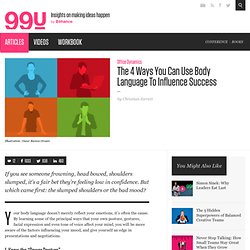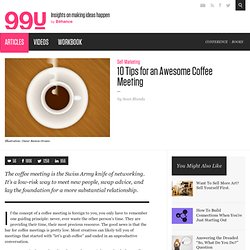

Blog – Tutorials – Online Training. Here are three simple tips to help give you confidence and rock the room at your next presentation or speech—whether you’re asking your audience to invest in your idea, support your team’s project, or give you their business. 1. Craft a story Present a clear problem with a compelling solution, and put your audience at the intersection of the two, bridging the gap for them. For example, let’s say an accounting firm booked fewer clients in July than in June, and needs its CEO to approve a sales plan to reverse the trend in August.
How could that plan be communicated to the CEO as a story, telling him how he can achieve his broader goals for the company? Discover what makes a good story in Lisa Cron’s Writing Fundamentals: The Craft of Story: 2. Check out a movie on setting up your deck for maximum impact, from Designing a Presentation with Justin Seeley: 3. The best presentations speak directly to the heart, taking each audience member on a personal and meaningful journey.
The 4 Ways You Can Use Body Language To Influence Success. If you see someone frowning, head bowed, shoulders slumped, it’s a fair bet they’re feeling low in confidence.

But which came first: the slumped shoulders or the bad mood? Your body language doesn’t merely reflect your emotions, it’s often the cause. By learning some of the principal ways that your own posture, gestures, facial expression and even tone of voice affect your mind, you will be more aware of the factors influencing your mood, and give yourself an edge in presentations and negotiations. 1. Know the “Power Posture” Opening up your body and filling more space – known as a “power posture” – has been shown in studies to have a range of confidence-boosting effects. In a study published last year, Amy Cuddy and her colleagues at Harvard Business School showed that students gave more impressive speeches for a job interview if, beforehand, they’d spent two minutes in two power poses – one sitting, one standing. 2. 3. 4.
10 Tips for an Awesome Coffee Meeting. The coffee meeting is the Swiss Army knife of networking.

It’s a low-risk way to meet new people, swap advice, and lay the foundation for a more substantial relationship. If the concept of a coffee meeting is foreign to you, you only have to remember one guiding principle: never, ever waste the other person’s time. They are providing their time, their most precious resource. The good news is that the bar for coffee meetings is pretty low. Most creatives can likely tell you of meetings that started with “let’s grab coffee” and ended in an unproductive conversation.
However, you’re better than that, dear reader. 1. When you email your potential coffee meeting participant, don’t simply ask to “pick their brain” or “see if there’s any potential” in you getting to know each other. “Hey Josh, Sean Blanda here, managing editor of 99u.com. Are you up for a coffee meeting sometime next week at the Midtown Starbucks? –Sean” 2. Taking Control of Contracts: What Every Creative Should Know. If you’re like most creatives, dealing with contracts is one of your least favorite tasks, a dreadful but necessary part of business life. It doesn’t help that many contracts seem to have been written in language from the 1800s that was designed to confuse more than clarify.
The good news is, you can overcome your apprehension about contracts with the right mindset and a few handy tips. Let’s start by debunking a common misperception: that the point of the contract is to protect yourself from a client who wants to stiff you. Lawyers don’t typically advertise this, but the happy truth is, most people aren’t looking for ways to take advantage of you. A more common problem – but one that can be just as costly – is that people tend to interpret the same information in different ways. Here’s an example: Say you’re an illustrator. You’re tempted to say, “Hey, I gave you what you asked for. People tend to interpret the same information in different ways. But guess what? 1. Blog de creatividad publicitaria: abril 2010.
Aquí os dejo una recopilación de piezas, que aún sin tener un nombre propio en común tienen el mismo idioma: la toma de conciencia: "entre la vida y la muerte hay solo 0,003 mm de latex" "Abuso Verbal puede ser tambien terrorifico" "Ellos no nacieron para vestir" "bebe a bordo. 80% de los asientos de bebe son instalados incorrectamente" "No trates a otros de la manera que no te gustaria que te traten" "Cortando arboles, estas acortando tu vida" "Despues de los juegos Olimpicos.
"El silencio lastima" "Un abusador nunca se reconoce como tal. "Apoyo para personas con desordenes alimenticios"